-
EXECUTIVE SUMMARY 19
-
GLOBAL COMPOSITES MARKET,
-
BY TYPE 21
-
GLOBAL COMPOSITES MARKET, BY RESIN TYPE 22
-
GLOBAL COMPOSITES
-
MARKET, BY PROCESS 23
-
GLOBAL COMPOSITES MARKET, BY END-USE 24
-
1.5
-
GLOBAL COMPOSITES MARKET, BY REGION 25
-
MARKET INTRODUCTION 26
-
DEFINITION
-
26
-
SCOPE OF THE STUDY 26
-
MARKET STRUCTURE 27
-
RESEARCH METHODOLOGY
-
28
-
RESEARCH PROCESS 28
-
PRIMARY RESEARCH 29
-
SECONDARY
-
RESEARCH 30
-
MARKET SIZE ESTIMATION 31
-
FORECAST MODEL 32
-
3.6
-
LIST OF ASSUMPTIONS 33
-
MARKET DYNAMICS 34
-
INTRODUCTION 34
- SURGE IN DEMAND FROM THE AUTOMOTIVE INDUSTRY 35
- GROWING WIND ENERGY SECTOR 38
- DRIVERS IMPACT ANALYSIS 39
-
4.2
-
DRIVERS 35
-
4.2.2
-
GROWTH OF THE CONSTRUCTION INDUSTRY 36
-
RESTRAINTS 39
- FLUCTUATING
- RESTRAINTS IMPACT ANALYSIS 40
-
RAW MATERIAL PRICES 39
-
OPPORTUNITIES
- RISING DEMAND FOR RECYCLABLE COMPOSITES 40
- RISING DEMAND
-
40
-
FROM VARIOUS EMERGING ECONOMIES 41
-
CHALLENGES 42
- AVAILABILITY
-
OF SUBSTITUTES 42
-
-
MARKET FACTOR ANALYSIS 43
-
VALUE CHAIN
- RAW MATERIALS SUPPLIERS 44
- COMPOSITES MANUFACTURERS
- DISTRIBUTION CHANNEL 44
- APPLICATION 45
-
ANALYSIS 43
-
44
-
PORTER'S
- THREAT OF NEW ENTRANTS 46
- BARGAINING
- THREAT OF SUBSTITUTES 46
- BARGAINING
- INTENSITY OF COMPETITIVE RIVALRY 47
-
FIVE FORCES MODEL 45
-
POWER OF SUPPLIERS 46
-
POWER OF BUYERS 46
-
PRICING
-
ANALYSIS, BY REGION 47
-
IMPACT OF COVID-19 ON THE GLOBAL COMPOSITES MARKET
- PRODUCTION SCENARIO 47
- IMPACT OF COVID 19 ON THE SUPPLY
-
47
-
CHAIN OF COMPOSITES MARKET 48
-
USE INDUSTRY 49
-
GLOBAL COMPOSITES MARKET, BY TYPE 50
-
OVERVIEW 50
- COMPOSITES: MARKET ESTIMATES & FORECAST BY TYPE, 2022-2030 51
-
6.1.2
-
COMPOSITES: MARKET ESTIMATES & FORECAST BY TYPE, 2022-2030 52
-
GLASS
- GLASS FIBER: MARKET ESTIMATES & FORECAST BY REGION,2022-2030
-
FIBER 52
-
52
-
CARBON FIBER 53
- CARBON FIBER: MARKET ESTIMATES & FORECAST
-
BY REGION,2022-2030 53
-
OTHERS 54
- OTHERS: MARKET ESTIMATES &
-
FORECAST BY REGION,2022-2030 54
-
GLOBAL COMPOSITES MARKET, BY RESIN TYPE 56
-
OVERVIEW 56
- THERMOSETTING COMPOSITES: MARKET ESTIMATES & FORECAST
- COMPOSITES: MARKET ESTIMATES & FORECAST
-
BY RESIN TYPE, 2022-2030 57
-
BY RESIN TYPE, 2022-2030 58
-
THERMOPLASTIC COMPOSITES 58
- THERMOPLASTIC
-
COMPOSITES: MARKET ESTIMATES & FORECAST BY REGION,2022-2030 58
-
THERMOSETTING
- THERMOSETTING COMPOSITES: MARKET ESTIMATES & FORECAST
-
COMPOSITES 60
-
BY REGION,2022-2030 60
-
-
GLOBAL COMPOSITES MARKET, BY PROCESS 62
-
OVERVIEW 62
- COMPOSITES: MARKET ESTIMATES & FORECAST BY PROCESS,
- COMPOSITES: MARKET ESTIMATES & FORECAST BY PROCESS,
-
LAYUP PROCESS 65
- LAYUP PROCESS: MARKET ESTIMATES
-
& FORECAST BY REGION,2022-2030 65
-
INJECTION MOLDING PROCESS 66
-
8.3.1
-
INJECTION MOLDING PROCESS: MARKET ESTIMATES & FORECAST BY REGION,2022-2030 66
-
FILAMENT WINDING PROCESS 67
- FILAMENT WINDING PROCESS: MARKET ESTIMATES
-
& FORECAST BY REGION,2022-2030 67
-
PULTRUSION PROCESS 68
- COMPRESSION MOLDING PROCESS: MARKET ESTIMATES
-
8.5.1
-
PULTRUSION PROCESS: MARKET ESTIMATES & FORECAST BY REGION,2022-2030 68
-
8.6
-
COMPRESSION MOLDING PROCESS 69
-
& FORECAST BY REGION, 2022-2030 69
-
OTHERS 70
- OTHERS: MARKET
-
ESTIMATES & FORECAST BY REGION,2022-2030 70
-
GLOBAL COMPOSITES MARKET,
-
BY END-USE 71
-
OVERVIEW 71
- COMPOSITES: MARKET ESTIMATES &
- COMPOSITES: MARKET ESTIMATES &
-
FORECAST BY END-USE, 2022-2030 72
-
FORECAST BY END-USE, 2022-2030 73
-
AEROSPACE & DEFENSE 74
-
9.2.1
-
AEROSPACE & DEFENSE: MARKET ESTIMATES & FORECAST BY REGION,2022-2030 74
-
AUTOMOTIVE & TRANSPORTATION 76
- AUTOMOTIVE & TRANSPORTATION:
-
MARKET ESTIMATES & FORECAST BY REGION, 2022-2030 76
-
ELECTRICAL &
- ELECTRICAL & ELECTRONICS: MARKET ESTIMATES & FORECAST
-
ELECTRONICS 78
-
BY REGION,2022-2030 78
-
BUILDING & CONSTRUCTION 79
- BUILDING
- WIND ENERGY: MARKET ESTIMATES & FORECAST BY REGION,2022-2030
-
& CONSTRUCTION: MARKET ESTIMATES & FORECAST BY REGION,2022-2030 79
-
9.6
-
WIND ENERGY 80
-
80
-
MARINE 81
- MARINE: MARKET ESTIMATES & FORECAST BY REGION,2022-2030
-
81
-
OTHERS 82
- OTHERS: MARKET ESTIMATES & FORECAST BY REGION,2022-2030
-
82
-
GLOBAL COMPOSITES MARKET, BY REGION 83
-
OVERVIEW 83
- US 91
- CANADA 95
-
10.2
-
NORTH AMERICA 86
-
EUROPE 99
- GERMANY 104
- RUSSIA 108
- UK 112
- ITALY
- FRANCE 120
- SPAIN 124
- REST OF EUROPE 128
-
116
-
ASIA-PACIFIC 132
- CHINA 137
- JAPAN 141
- SOUTH KOREA 149
- AUSTRALIA & NEW ZEALAND 153
- REST OF ASIA-PACIFIC 157
-
10.4.3
-
INDIA 145
-
LATIN AMERICA 161
- BRAZIL
- MEXICO 170
- ARGENTINA 174
- REST OF LATIN AMERICA
-
166
-
178
-
THE MIDDLE EAST & AFRICA 182
- TURKEY 187
- GCC COUNTRIES 195
- REST OF THE MIDDLE EAST
-
10.6.2
-
SOUTH AFRICA 191
-
& AFRICA 199
-
COMPETITIVE LANDSCAPE 203
-
INTRODUCTION 203
-
MARKET STRATEGY ANALYSIS 203
-
KEY DEVELOPMENTS & GROWTH STRATEGIES
-
204
-
COMPETITIVE BENCHMARKING 207
-
COMPANY PROFILES 208
-
12.1
-
PPG INDUSTRIES INC. 208
-
209
-
12.1.5
-
SWOT ANALYSIS 211
-
12.2.1
-
COMPANY OVERVIEW 212
-
214
-
STRATEGIES 217
-
DEVELOPMENTS 219
-
OVERVIEW 220
-
223
-
12.5.3
-
PRODUCTS OFFERED 224
-
225
-
OVERVIEW 226
-
228
-
12.7.2
-
FINANCIAL OVERVIEW 230
-
231
-
233
-
12.8.3
-
PRODUCTS OFFERED 234
-
235
-
OFFERED 237
-
12.9.6
-
KEY STRATEGIES 238
-
12.10.2
-
FINANCIAL OVERVIEW 240
-
241
-
INTERNATIONAL LLC 243
-
243
-
12.11.5
-
SWOT ANALYSIS 245
-
-
COMPANY OVERVIEW 208
-
FINANCIAL OVERVIEW
-
PRODUCTS OFFERED 210
-
KEY DEVELOPMENTS 210
-
KEY STRATEGIES 211
-
HEXION 212
- FINANCIAL OVERVIEW 213
- PRODUCTS OFFERED
- KEY DEVELOPMENTS 216
- SWOT ANALYSIS 217
- KEY
-
JUSHI GROUP CO. LTD 218
- COMPANY OVERVIEW 218
- FINANCIAL OVERVIEW 218
- PRODUCTS OFFERED 218
- KEY
- SWOT ANALYSIS 219
- KEY STRATEGIES 219
-
TORAY INDUSTRIES INC. 220
- COMPANY OVERVIEW 220
- FINANCIAL
- PRODUCTS OFFERED 221
- KEY DEVELOPMENT 221
- SWOT ANALYSIS 222
- KEY STRATEGIES 222
-
OWENS CORNING
- COMPANY OVERVIEW 223
- FINANCIAL OVERVIEW 223
- KEY DEVELOPMENTS 224
- SWOT ANALYSIS
- KEY STRATEGIES 225
-
TEIJIN LIMITED 226
- COMPANY
- FINANCIAL OVERVIEW 226
- PRODUCTS OFFERED 227
- KEY DEVELOPMENTS 227
- SWOT ANALYSIS 228
- KEY STRATEGIES
-
HEXCEL CORPORATION 229
- COMPANY OVERVIEW 229
- PRODUCTS OFFERED 230
- KEY DEVELOPMENTS
- SWOT ANALYSIS 232
- KEY STRATEGIES 232
-
SGL CARBON
- COMPANY OVERVIEW 233
- FINANCIAL OVERVIEW 233
- KEY DEVELOPMENTS 234
- SWOT ANALYSIS
- KEY STRATEGIES 235
-
MITSUBISHI CHEMICAL CORPORATION 236
- COMPANY OVERVIEW 236
- FINANCIAL OVERVIEW 236
- PRODUCTS
- KEY DEVELOPMENTS 237
- SWOT ANALYSIS 238
-
SOLVAY 239
- COMPANY OVERVIEW 239
- PRODUCTS OFFERED 241
- KEY DEVELOPMENTS
- SWOT ANALYSIS 242
- KEY STRATEGIES 242
-
HUNTSMAN
- COMPANY OVERVIEW 243
- FINANCIAL OVERVIEW
- PRODUCTS OFFERED 244
- KEY DEVELOPMENTS 244
- KEY STRATEGIES 245
-
LIST OF TABLES
-
LIST OF ASSUMPTIONS 33
-
GLOBAL COMPOSITES MARKET, PRICING
-
ANALYSIS (USD/TONS) IMITATI 47
-
COMPOSITES MARKET ESTIMATES & FORECAST,
-
BY TYPE, 2022-2030 (USD MILLION) 51
-
COMPOSITES MARKET ESTIMATES &
-
FORECAST, BY TYPE, 2022-2030 (KILO TONS) 52
-
GLASS FIBER MARKET ESTIMATES
-
& FORECAST, BY REGION, 2022-2030 (USD MILLION) 52
-
GLASS FIBER MARKET
-
ESTIMATES & FORECAST, BY REGION, 2022-2030 (KILO TONS) 53
-
CARBON
-
FIBER MARKET ESTIMATES & FORECAST, BY REGION, 2022-2030 (USD MILLION) 53
-
CARBON FIBER MARKET ESTIMATES & FORECAST, BY REGION, 2022-2030 (KILO
-
TONS) 54
-
OTHERSS MARKET ESTIMATES & FORECAST, BY REGION, 2022-2030
-
(USD MILLION) 54
-
OTHERS MARKET ESTIMATES & FORECAST, BY REGION,
-
THERMOSETTING COMPOSITES MARKET ESTIMATES
-
& FORECAST, BY RESIN TYPE, 2022-2030 (USD MILLION) 57
-
COMPOSITES
-
MARKET ESTIMATES & FORECAST, BY RESIN TYPE, 2022-2030 (KILO TONS) 58
-
TABLE
-
THERMOPLASTIC COMPOSITES MARKET ESTIMATES & FORECAST, BY REGION, 2022-2030
-
(USD MILLION) 58
-
THERMOPLASTIC COMPOSITES MARKET ESTIMATES & FORECAST,
-
BY REGION, 2022-2030 (KILO TONS) 59
-
THERMOSETTING COMPOSITES MARKET
-
ESTIMATES & FORECAST, BY REGION, 2022-2030 (USD MILLION) 60
-
THERMOSETTING
-
COMPOSITES MARKET ESTIMATES & FORECAST, BY REGION, 2022-2030 (KILO TONS) 61
-
COMPOSITES MARKET ESTIMATES & FORECAST, BY PROCESS, 2022-2030 (USD
-
MILLION) 63
-
COMPOSITES MARKET ESTIMATES & FORECAST, BY PROCESS,
-
LAYUP PROCESS MARKET ESTIMATES & FORECAST,
-
BY REGION, 2022-2030 (USD MILLION) 65
-
LAYUP PROCESS MARKET ESTIMATES
-
& FORECAST, BY REGION, 2022-2030 (KILO TONS) 65
-
INJECTION MOLDING
-
PROCESS MARKET ESTIMATES & FORECAST, BY REGION, 2022-2030 (USD MILLION) 66
-
INJECTION MOLDING PROCESS MARKET ESTIMATES & FORECAST, BY REGION,
-
FILAMENT WINDING PROCESS MARKET ESTIMATES
-
& FORECAST, BY REGION, 2022-2030 (USD MILLION) 67
-
FILAMENT WINDING
-
PROCESS MARKET ESTIMATES & FORECAST, BY REGION, 2022-2030 (KILO TONS) 67
-
PULTRUSION PROCESS MARKET ESTIMATES & FORECAST, BY REGION, 2022-2030
-
(USD MILLION) 68
-
PULTRUSION PROCESS MARKET ESTIMATES & FORECAST,
-
BY REGION, 2022-2030 (KILO TONS) 68
-
COMPRESSION MOLDING PROCESS MARKET
-
ESTIMATES & FORECAST, BY REGION, 2022-2030 (USD MILLION) 69
-
COMPRESSION
-
MOLDING PROCESS MARKET ESTIMATES & FORECAST, BY REGION, 2022-2030 (KILO TONS)
-
69
-
OTHERSS MARKET ESTIMATES & FORECAST, BY REGION, 2022-2030 (USD
-
MILLION) 70
-
OTHERS MARKET ESTIMATES & FORECAST, BY REGION, 2022-2030
-
(KILO TONS) 70
-
COMPOSITES MARKET ESTIMATES & FORECAST, BY END-USE,
-
COMPOSITES MARKET ESTIMATES & FORECAST,
-
BY END-USE, 2022-2030 (KILO TONS) 73
-
AEROSPACE & DEFENSE MARKET
-
ESTIMATES & FORECAST, BY REGION, 2022-2030 (USD MILLION) 74
-
AEROSPACE
-
& DEFENSE MARKET ESTIMATES & FORECAST, BY REGION, 2022-2030 (KILO TONS)
-
75
-
AUTOMOTIVE & TRANSPORTATION MARKET ESTIMATES & FORECAST,
-
BY REGION, 2022-2030 (USD MILLION) 76
-
AUTOMOTIVE & TRANSPORTATION
-
MARKET ESTIMATES & FORECAST, BY REGION, 2022-2030 (KILO TONS) 77
-
TABLE
-
ELECTRICAL & ELECTRONICS MARKET ESTIMATES & FORECAST, BY REGION, 2022-2030
-
(USD MILLION) 78
-
ELECTRICAL & ELECTRONICS MARKET ESTIMATES &
-
FORECAST, BY REGION, 2022-2030 (KILO TONS) 78
-
BUILDING & CONSTRUCTION
-
MARKET ESTIMATES & FORECAST, BY REGION, 2022-2030 (USD MILLION) 79
-
TABLE
-
BUILDING & CONSTRUCTION MARKET ESTIMATES & FORECAST, BY REGION, 2022-2030
-
(KILO TONS) 79
-
WIND ENERGY MARKET ESTIMATES & FORECAST, BY REGION,
-
WIND ENERGY MARKET ESTIMATES & FORECAST,
-
BY REGION, 2022-2030 (KILO TONS) 80
-
MARINE MARKET ESTIMATES &
-
FORECAST, BY REGION, 2022-2030 (USD MILLION) 81
-
MARINE MARKET ESTIMATES
-
& FORECAST, BY REGION, 2022-2030 (KILO TONS) 81
-
OTHERSS MARKET
-
ESTIMATES & FORECAST, BY REGION, 2022-2030 (USD MILLION) 82
-
OTHERS
-
MARKET ESTIMATES & FORECAST, BY REGION, 2022-2030 (KILO TONS) 82
-
TABLE
-
GLOBAL COMPOSITES MARKET, BY REGION, 2022-2030 (USD MILLION) 85
-
TABLE 47
-
GLOBAL COMPOSITES MARKET, BY REGION, 2022-2030 (KILO TONS) 86
-
NORTH
-
AMERICA: COMPOSITES MARKET, BY COUNTRY, 2022-2030 (USD MILLION) 87
-
TABLE 49
-
NORTH AMERICA: COMPOSITES MARKET, BY COUNTRY, 2022-2030 (KILO TONS) 87
-
TABLE
-
NORTH AMERICA: COMPOSITES MARKET, BY TYPE, 2022-2030 (USD MILLION) 87
-
TABLE
-
NORTH AMERICA: COMPOSITES MARKET, BY TYPE, 2022-2030 (KILO TONS) 88
-
TABLE
-
NORTH AMERICA: COMPOSITES MARKET, BY RESIN TYPE, 2022-2030 (USD MILLION) 88
-
NORTH AMERICA: COMPOSITES MARKET, BY RESIN TYPE, 2022-2030 (KILO TONS)
-
88
-
NORTH AMERICA: COMPOSITES MARKET, BY PROCESS, 2022-2030 (USD MILLION)
-
89
-
NORTH AMERICA: COMPOSITES MARKET, BY PROCESS, 2022-2030 (KILO TONS)
-
89
-
NORTH AMERICA: COMPOSITES MARKET, BY END-USE, 2022-2030 (USD MILLION)
-
90
-
NORTH AMERICA: COMPOSITES MARKET, BY END-USE, 2022-2030 (KILO TONS)
-
90
-
US: COMPOSITES MARKET, BY TYPE, 2022-2030 (USD MILLION) 91
-
TABLE
-
US: COMPOSITES MARKET, BY TYPE, 2022-2030 (KILO TONS) 91
-
US: COMPOSITES
-
MARKET, BY RESIN TYPE, 2022-2030 (USD MILLION) 92
-
US: COMPOSITES MARKET,
-
BY RESIN TYPE, 2022-2030 (KILO TONS) 92
-
US: COMPOSITES MARKET, BY
-
PROCESS, 2022-2030 (USD MILLION) 93
-
US: COMPOSITES MARKET, BY PROCESS,
-
US: COMPOSITES MARKET, BY END-USE, 2022-2030
-
(USD MILLION) 94
-
US: COMPOSITES MARKET, BY END-USE, 2022-2030 (KILO
-
TONS) 94
-
CANADA: COMPOSITES MARKET, BY TYPE, 2022-2030 (USD MILLION)
-
95
-
CANADA: COMPOSITES MARKET, BY TYPE, 2022-2030 (KILO TONS) 95
-
CANADA: COMPOSITES MARKET, BY RESIN TYPE, 2022-2030 (USD MILLION) 96
-
CANADA: COMPOSITES MARKET, BY RESIN TYPE, 2022-2030 (KILO TONS) 96
-
CANADA: COMPOSITES MARKET, BY PROCESS, 2022-2030 (USD MILLION) 97
-
CANADA: COMPOSITES MARKET, BY PROCESS, 2022-2030 (KILO TONS) 97
-
TABLE
-
CANADA: COMPOSITES MARKET, BY END-USE, 2022-2030 (USD MILLION) 98
-
TABLE
-
CANADA: COMPOSITES MARKET, BY END-USE, 2022-2030 (KILO TONS) 98
-
TABLE 74
-
EUROPE: COMPOSITES MARKET, BY COUNTRY, 2022-2030 (USD MILLION) 99
-
TABLE 75
-
EUROPE: COMPOSITES MARKET, BY COUNTRY, 2022-2030 (KILO TONS) 100
-
EUROPE:
-
COMPOSITES MARKET, BY TYPE, 2022-2030 (USD MILLION) 100
-
EUROPE: COMPOSITES
-
MARKET, BY TYPE, 2022-2030 (KILO TONS) 101
-
EUROPE: COMPOSITES MARKET,
-
BY RESIN TYPE, 2022-2030 (USD MILLION) 101
-
EUROPE: COMPOSITES MARKET,
-
BY RESIN TYPE, 2022-2030 (KILO TONS) 101
-
EUROPE: COMPOSITES MARKET,
-
BY PROCESS, 2022-2030 (USD MILLION) 102
-
EUROPE: COMPOSITES MARKET,
-
BY PROCESS, 2022-2030 (KILO TONS) 102
-
EUROPE: COMPOSITES MARKET, BY
-
END-USE, 2022-2030 (USD MILLION) 103
-
EUROPE: COMPOSITES MARKET, BY
-
END-USE, 2022-2030 (KILO TONS) 103
-
GERMANY: COMPOSITES MARKET, BY
-
TYPE, 2022-2030 (USD MILLION) 104
-
GERMANY: COMPOSITES MARKET, BY TYPE,
-
GERMANY: COMPOSITES MARKET, BY RESIN TYPE,
-
GERMANY: COMPOSITES MARKET, BY RESIN TYPE,
-
GERMANY: COMPOSITES MARKET, BY PROCESS,
-
GERMANY: COMPOSITES MARKET, BY PROCESS,
-
GERMANY: COMPOSITES MARKET, BY END-USE,
-
GERMANY: COMPOSITES MARKET, BY END-USE,
-
RUSSIA: COMPOSITES MARKET, BY TYPE, 2022-2030
-
(USD MILLION) 108
-
RUSSIA: COMPOSITES MARKET, BY TYPE, 2022-2030 (KILO
-
TONS) 108
-
RUSSIA: COMPOSITES MARKET, BY RESIN TYPE, 2022-2030 (USD
-
MILLION) 109
-
RUSSIA: COMPOSITES MARKET, BY RESIN TYPE, 2022-2030 (KILO
-
TONS) 109
-
RUSSIA: COMPOSITES MARKET, BY PROCESS, 2022-2030 (USD MILLION)
-
110
-
RUSSIA: COMPOSITES MARKET, BY PROCESS, 2022-2030 (KILO TONS) 110
-
RUSSIA: COMPOSITES MARKET, BY END-USE, 2022-2030 (USD MILLION) 111
-
RUSSIA: COMPOSITES MARKET, BY END-USE, 2022-2030 (KILO TONS) 111
-
TABLE
-
UK: COMPOSITES MARKET, BY TYPE, 2022-2030 (USD MILLION) 112
-
UK:
-
COMPOSITES MARKET, BY TYPE, 2022-2030 (KILO TONS) 112
-
UK: COMPOSITES
-
MARKET, BY RESIN TYPE, 2022-2030 (USD MILLION) 113
-
UK: COMPOSITES
-
MARKET, BY RESIN TYPE, 2022-2030 (KILO TONS) 113
-
UK: COMPOSITES MARKET,
-
BY PROCESS, 2022-2030 (USD MILLION) 114
-
UK: COMPOSITES MARKET, BY
-
PROCESS, 2022-2030 (KILO TONS) 114
-
UK: COMPOSITES MARKET, BY END-USE,
-
UK: COMPOSITES MARKET, BY END-USE, 2022-2030
-
(KILO TONS) 115
-
ITALY: COMPOSITES MARKET, BY TYPE, 2022-2030 (USD
-
MILLION) 116
-
ITALY: COMPOSITES MARKET, BY TYPE, 2022-2030 (KILO TONS)
-
116
-
ITALY: COMPOSITES MARKET, BY RESIN TYPE, 2022-2030 (USD MILLION)
-
117
-
ITALY: COMPOSITES MARKET, BY RESIN TYPE, 2022-2030 (KILO TONS)
-
117
-
ITALY: COMPOSITES MARKET, BY PROCESS, 2022-2030 (USD MILLION)
-
118
-
ITALY: COMPOSITES MARKET, BY PROCESS, 2022-2030 (KILO TONS) 118
-
ITALY: COMPOSITES MARKET, BY END-USE, 2022-2030 (USD MILLION) 119
-
ITALY: COMPOSITES MARKET, BY END-USE, 2022-2030 (KILO TONS) 119
-
TABLE
-
FRANCE: COMPOSITES MARKET, BY TYPE, 2022-2030 (USD MILLION) 120
-
TABLE 117
-
FRANCE: COMPOSITES MARKET, BY TYPE, 2022-2030 (KILO TONS) 120
-
FRANCE:
-
COMPOSITES MARKET, BY RESIN TYPE, 2022-2030 (USD MILLION) 121
-
FRANCE:
-
COMPOSITES MARKET, BY RESIN TYPE, 2022-2030 (KILO TONS) 121
-
FRANCE:
-
COMPOSITES MARKET, BY PROCESS, 2022-2030 (USD MILLION) 122
-
FRANCE:
-
COMPOSITES MARKET, BY PROCESS, 2022-2030 (KILO TONS) 122
-
FRANCE:
-
COMPOSITES MARKET, BY END-USE, 2022-2030 (USD MILLION) 123
-
FRANCE:
-
COMPOSITES MARKET, BY END-USE, 2022-2030 (KILO TONS) 123
-
SPAIN: COMPOSITES
-
MARKET, BY TYPE, 2022-2030 (USD MILLION) 124
-
SPAIN: COMPOSITES MARKET,
-
BY TYPE, 2022-2030 (KILO TONS) 124
-
SPAIN: COMPOSITES MARKET, BY RESIN
-
TYPE, 2022-2030 (USD MILLION) 125
-
SPAIN: COMPOSITES MARKET, BY RESIN
-
TYPE, 2022-2030 (KILO TONS) 125
-
SPAIN: COMPOSITES MARKET, BY PROCESS,
-
SPAIN: COMPOSITES MARKET, BY PROCESS,
-
SPAIN: COMPOSITES MARKET, BY END-USE, 2022-2030
-
(USD MILLION) 127
-
SPAIN: COMPOSITES MARKET, BY END-USE, 2022-2030
-
(KILO TONS) 127
-
REST OF EUROPE: COMPOSITES MARKET, BY TYPE, 2022-2030
-
(USD MILLION) 128
-
REST OF EUROPE: COMPOSITES MARKET, BY TYPE, 2022-2030
-
(KILO TONS) 128
-
REST OF EUROPE: COMPOSITES MARKET, BY RESIN TYPE,
-
REST OF EUROPE: COMPOSITES MARKET, BY
-
RESIN TYPE, 2022-2030 (KILO TONS) 129
-
REST OF EUROPE: COMPOSITES
-
MARKET, BY PROCESS, 2022-2030 (USD MILLION) 130
-
REST OF EUROPE: COMPOSITES
-
MARKET, BY PROCESS, 2022-2030 (KILO TONS) 130
-
REST OF EUROPE: COMPOSITES
-
MARKET, BY END-USE, 2022-2030 (USD MILLION) 131
-
REST OF EUROPE: COMPOSITES
-
MARKET, BY END-USE, 2022-2030 (KILO TONS) 131
-
ASIA-PACIFIC: COMPOSITES
-
MARKET, BY COUNTRY, 2022-2030 (USD MILLION) 132
-
ASIA-PACIFIC: COMPOSITES
-
MARKET, BY COUNTRY, 2022-2030 (KILO TONS) 133
-
ASIA-PACIFIC: COMPOSITES
-
MARKET, BY TYPE, 2022-2030 (USD MILLION) 133
-
ASIA-PACIFIC: COMPOSITES
-
MARKET, BY TYPE, 2022-2030 (KILO TONS) 134
-
ASIA-PACIFIC: COMPOSITES
-
MARKET, BY RESIN TYPE, 2022-2030 (USD MILLION) 134
-
ASIA-PACIFIC:
-
COMPOSITES MARKET, BY RESIN TYPE, 2022-2030 (KILO TONS) 134
-
ASIA-PACIFIC:
-
COMPOSITES MARKET, BY PROCESS, 2022-2030 (USD MILLION) 135
-
ASIA-PACIFIC:
-
COMPOSITES MARKET, BY PROCESS, 2022-2030 (KILO TONS) 135
-
ASIA-PACIFIC:
-
COMPOSITES MARKET, BY END-USE, 2022-2030 (USD MILLION) 136
-
ASIA-PACIFIC:
-
COMPOSITES MARKET, BY END-USE, 2022-2030 (KILO TONS) 136
-
CHINA: COMPOSITES
-
MARKET, BY TYPE, 2022-2030 (USD MILLION) 137
-
CHINA: COMPOSITES MARKET,
-
BY TYPE, 2022-2030 (KILO TONS) 137
-
CHINA: COMPOSITES MARKET, BY RESIN
-
TYPE, 2022-2030 (USD MILLION) 138
-
CHINA: COMPOSITES MARKET, BY RESIN
-
TYPE, 2022-2030 (KILO TONS) 138
-
CHINA: COMPOSITES MARKET, BY PROCESS,
-
CHINA: COMPOSITES MARKET, BY PROCESS,
-
CHINA: COMPOSITES MARKET, BY END-USE, 2022-2030
-
(USD MILLION) 140
-
CHINA: COMPOSITES MARKET, BY END-USE, 2022-2030
-
(KILO TONS) 140
-
JAPAN: COMPOSITES MARKET, BY TYPE, 2022-2030 (USD
-
MILLION) 141
-
JAPAN: COMPOSITES MARKET, BY TYPE, 2022-2030 (KILO TONS)
-
141
-
JAPAN: COMPOSITES MARKET, BY RESIN TYPE, 2022-2030 (USD MILLION)
-
142
-
JAPAN: COMPOSITES MARKET, BY RESIN TYPE, 2022-2030 (KILO TONS)
-
142
-
JAPAN: COMPOSITES MARKET, BY PROCESS, 2022-2030 (USD MILLION)
-
143
-
JAPAN: COMPOSITES MARKET, BY PROCESS, 2022-2030 (KILO TONS) 143
-
JAPAN: COMPOSITES MARKET, BY END-USE, 2022-2030 (USD MILLION) 144
-
JAPAN: COMPOSITES MARKET, BY END-USE, 2022-2030 (KILO TONS) 144
-
TABLE
-
INDIA: COMPOSITES MARKET, BY TYPE, 2022-2030 (USD MILLION) 145
-
TABLE 167
-
INDIA: COMPOSITES MARKET, BY TYPE, 2022-2030 (KILO TONS) 145
-
INDIA:
-
COMPOSITES MARKET, BY RESIN TYPE, 2022-2030 (USD MILLION) 146
-
INDIA:
-
COMPOSITES MARKET, BY RESIN TYPE, 2022-2030 (KILO TONS) 146
-
INDIA:
-
COMPOSITES MARKET, BY PROCESS, 2022-2030 (USD MILLION) 147
-
INDIA:
-
COMPOSITES MARKET, BY PROCESS, 2022-2030 (KILO TONS) 147
-
INDIA: COMPOSITES
-
MARKET, BY END-USE, 2022-2030 (USD MILLION) 148
-
INDIA: COMPOSITES
-
MARKET, BY END-USE, 2022-2030 (KILO TONS) 148
-
SOUTH KOREA: COMPOSITES
-
MARKET, BY TYPE, 2022-2030 (USD MILLION) 149
-
SOUTH KOREA: COMPOSITES
-
MARKET, BY GARDE, 2022-2030 (KILO TONS) 149
-
SOUTH KOREA: COMPOSITES
-
MARKET, BY RESIN TYPE, 2022-2030 (USD MILLION) 150
-
SOUTH KOREA: COMPOSITES
-
MARKET, BY RESIN TYPE, 2022-2030 (KILO TONS) 150
-
SOUTH KOREA: COMPOSITES
-
MARKET, BY PROCESS, 2022-2030 (USD MILLION) 151
-
SOUTH KOREA: COMPOSITES
-
MARKET, BY PROCESS, 2022-2030 (KILO TONS) 151
-
SOUTH KOREA: COMPOSITES
-
MARKET, BY END-USE, 2022-2030 (USD MILLION) 152
-
SOUTH KOREA: COMPOSITES
-
MARKET, BY END-USE, 2022-2030 (KILO TONS) 152
-
AUSTRALIA & NEW
-
ZEALAND: COMPOSITES MARKET, BY TYPE, 2022-2030 (USD MILLION) 153
-
TABLE 183
-
AUSTRALIA & NEW ZEALAND: COMPOSITES MARKET, BY TYPE, 2022-2030 (KILO TONS) 153
-
AUSTRALIA & NEW ZEALAND: COMPOSITES MARKET, BY RESIN TYPE, 2022-2030
-
(USD MILLION) 154
-
AUSTRALIA & NEW ZEALAND: COMPOSITES MARKET,
-
BY RESIN TYPE, 2022-2030 (KILO TONS) 154
-
AUSTRALIA & NEW ZEALAND:
-
COMPOSITES MARKET, BY PROCESS, 2022-2030 (USD MILLION) 155
-
AUSTRALIA
-
& NEW ZEALAND: COMPOSITES MARKET, BY PROCESS, 2022-2030 (KILO TONS) 155
-
TABLE
-
AUSTRALIA & NEW ZEALAND: COMPOSITES MARKET, BY END-USE, 2022-2030 (USD MILLION)
-
156
-
AUSTRALIA & NEW ZEALAND: COMPOSITES MARKET, BY END-USE, 2022-2030
-
(KILO TONS) 156
-
REST OF ASIA-PACIFIC: COMPOSITES MARKET, BY TYPE,
-
REST OF ASIA-PACIFIC: COMPOSITES MARKET,
-
BY TYPE, 2022-2030 (KILO TONS) 157
-
REST OF ASIA-PACIFIC: COMPOSITES
-
MARKET, BY RESIN TYPE, 2022-2030 (USD MILLION) 158
-
REST OF ASIA-PACIFIC:
-
COMPOSITES MARKET, BY RESIN TYPE, 2022-2030 (KILO TONS) 158
-
REST
-
OF ASIA-PACIFIC: COMPOSITES MARKET, BY PROCESS, 2022-2030 (USD MILLION) 159
-
TABLE
-
REST OF ASIA-PACIFIC: COMPOSITES MARKET, BY PROCESS, 2022-2030 (KILO TONS) 159
-
REST OF ASIA-PACIFIC: COMPOSITES MARKET, BY END-USE, 2022-2030 (USD
-
MILLION) 160
-
REST OF ASIA-PACIFIC: COMPOSITES MARKET, BY END-USE,
-
LATIN AMERICA: COMPOSITES MARKET, BY COUNTRY,
-
LATIN AMERICA: COMPOSITES MARKET, BY
-
COUNTRY, 2022-2030 (KILO TONS) 162
-
LATIN AMERICA: COMPOSITES MARKET,
-
BY TYPE, 2022-2030 (USD MILLION) 162
-
LATIN AMERICA: COMPOSITES MARKET,
-
BY TYPE, 2022-2030 (KILO TONS) 163
-
LATIN AMERICA: COMPOSITES MARKET,
-
BY RESIN TYPE, 2022-2030 (USD MILLION) 163
-
LATIN AMERICA: COMPOSITES
-
MARKET, BY RESIN TYPE, 2022-2030 (KILO TONS) 163
-
LATIN AMERICA: COMPOSITES
-
MARKET, BY PROCESS, 2022-2030 (USD MILLION) 164
-
LATIN AMERICA: COMPOSITES
-
MARKET, BY PROCESS, 2022-2030 (KILO TONS) 164
-
LATIN AMERICA: COMPOSITES
-
MARKET, BY END-USE, 2022-2030 (USD MILLION) 165
-
LATIN AMERICA: COMPOSITES
-
MARKET, BY END-USE, 2022-2030 (KILO TONS) 165
-
BRAZIL: COMPOSITES
-
MARKET, BY TYPE, 2022-2030 (USD MILLION) 166
-
BRAZIL: COMPOSITES MARKET,
-
BY TYPE, 2022-2030 (KILO TONS) 166
-
BRAZIL: COMPOSITES MARKET, BY
-
RESIN TYPE, 2022-2030 (USD MILLION) 167
-
BRAZIL: COMPOSITES MARKET,
-
BY RESIN TYPE, 2022-2030 (KILO TONS) 167
-
BRAZIL: COMPOSITES MARKET,
-
BY PROCESS, 2022-2030 (USD MILLION) 168
-
BRAZIL: COMPOSITES MARKET,
-
BY PROCESS, 2022-2030 (KILO TONS) 168
-
BRAZIL: COMPOSITES MARKET,
-
BY END-USE, 2022-2030 (USD MILLION) 169
-
BRAZIL: COMPOSITES MARKET,
-
BY END-USE, 2022-2030 (KILO TONS) 169
-
MEXICO: COMPOSITES MARKET,
-
BY TYPE, 2022-2030 (USD MILLION) 170
-
MEXICO: COMPOSITES MARKET, BY
-
TYPE, 2022-2030 (KILO TONS) 170
-
MEXICO: COMPOSITES MARKET, BY RESIN
-
TYPE, 2022-2030 (USD MILLION) 171
-
MEXICO: COMPOSITES MARKET, BY RESIN
-
TYPE, 2022-2030 (KILO TONS) 171
-
MEXICO: COMPOSITES MARKET, BY PROCESS,
-
MEXICO: COMPOSITES MARKET, BY PROCESS,
-
MEXICO: COMPOSITES MARKET, BY END-USE,
-
MEXICO: COMPOSITES MARKET, BY END-USE,
-
ARGENTINA: COMPOSITES MARKET, BY TYPE,
-
ARGENTINA: COMPOSITES MARKET, BY TYPE,
-
ARGENTINA: COMPOSITES MARKET, BY RESIN
-
TYPE, 2022-2030 (USD MILLION) 175
-
ARGENTINA: COMPOSITES MARKET, BY
-
RESIN TYPE, 2022-2030 (KILO TONS) 175
-
ARGENTINA: COMPOSITES MARKET,
-
BY PROCESS, 2022-2030 (USD MILLION) 176
-
ARGENTINA: COMPOSITES MARKET,
-
BY PROCESS, 2022-2030 (KILO TONS) 176
-
ARGENTINA: COMPOSITES MARKET,
-
BY END-USE, 2022-2030 (USD MILLION) 177
-
ARGENTINA: COMPOSITES MARKET,
-
BY END-USE, 2022-2030 (KILO TONS) 177
-
REST OF LATIN AMERICA: COMPOSITES
-
MARKET, BY TYPE, 2022-2030 (USD MILLION) 178
-
REST OF LATIN AMERICA:
-
COMPOSITES MARKET, BY TYPE, 2022-2030 (KILO TONS) 178
-
REST OF LATIN
-
AMERICA: COMPOSITES MARKET, BY RESIN TYPE, 2022-2030 (USD MILLION) 179
-
TABLE
-
REST OF LATIN AMERICA: COMPOSITES MARKET, BY RESIN TYPE, 2022-2030 (KILO TONS)
-
179
-
REST OF LATIN AMERICA: COMPOSITES MARKET, BY PROCESS, 2022-2030
-
(USD MILLION) 180
-
REST OF LATIN AMERICA: COMPOSITES MARKET, BY PROCESS,
-
REST OF LATIN AMERICA: COMPOSITES MARKET,
-
BY END-USE, 2022-2030 (USD MILLION) 181
-
REST OF LATIN AMERICA: COMPOSITES
-
MARKET, BY END-USE, 2022-2030 (KILO TONS) 181
-
MIDDLE EAST & AFRICA:
-
COMPOSITES MARKET, BY COUNTRY, 2022-2030 (USD MILLION) 182
-
MIDDLE
-
EAST & AFRICA: COMPOSITES MARKET, BY COUNTRY, 2022-2030 (KILO TONS) 183
-
TABLE
-
MIDDLE EAST & AFRICA: COMPOSITES MARKET, BY TYPE, 2022-2030 (USD MILLION)
-
183
-
MIDDLE EAST & AFRICA: COMPOSITES MARKET, BY TYPE, 2022-2030
-
(KILO TONS) 184
-
MIDDLE EAST & AFRICA: COMPOSITES MARKET, BY RESIN
-
TYPE, 2022-2030 (USD MILLION) 184
-
MIDDLE EAST & AFRICA: COMPOSITES
-
MARKET, BY RESIN TYPE, 2022-2030 (KILO TONS) 184
-
MIDDLE EAST &
-
AFRICA: COMPOSITES MARKET, BY PROCESS, 2022-2030 (USD MILLION) 185
-
TABLE 247
-
MIDDLE EAST & AFRICA: COMPOSITES MARKET, BY PROCESS, 2022-2030 (KILO TONS) 185
-
MIDDLE EAST & AFRICA: COMPOSITES MARKET, BY END-USE, 2022-2030 (USD
-
MILLION) 186
-
MIDDLE EAST & AFRICA: COMPOSITES MARKET, BY END-USE,
-
TURKEY: COMPOSITES MARKET, BY TYPE, 2022-2030
-
(USD MILLION) 187
-
TURKEY: COMPOSITES MARKET, BY TYPE, 2022-2030 (KILO
-
TONS) 187
-
TURKEY: COMPOSITES MARKET, BY RESIN TYPE, 2022-2030 (USD
-
MILLION) 188
-
TURKEY: COMPOSITES MARKET, BY RESIN TYPE, 2022-2030
-
(KILO TONS) 188
-
TURKEY: COMPOSITES MARKET, BY PROCESS, 2022-2030
-
(USD MILLION) 189
-
TURKEY: COMPOSITES MARKET, BY PROCESS, 2022-2030
-
(KILO TONS) 189
-
TURKEY: COMPOSITES MARKET, BY END-USE, 2022-2030
-
(USD MILLION) 190
-
TURKEY: COMPOSITES MARKET, BY END-USE, 2022-2030
-
(KILO TONS) 190
-
SOUTH AFRICA: COMPOSITES MARKET, BY TYPE, 2022-2030
-
(USD MILLION) 191
-
SOUTH AFRICA: COMPOSITES MARKET, BY TYPE, 2022-2030
-
(KILO TONS) 191
-
SOUTH AFRICA: COMPOSITES MARKET, BY RESIN TYPE, 2022-2030
-
(USD MILLION) 192
-
SOUTH AFRICA: COMPOSITES MARKET, BY RESIN TYPE,
-
SOUTH AFRICA: COMPOSITES MARKET, BY PROCESS,
-
SOUTH AFRICA: COMPOSITES MARKET, BY PROCESS,
-
SOUTH AFRICA: COMPOSITES MARKET, BY END-USE,
-
SOUTH AFRICA: COMPOSITES MARKET, BY END-USE,
-
GCC COUNTRIES: COMPOSITES MARKET, BY TYPE,
-
GCC COUNTRIES: COMPOSITES MARKET, BY
-
TYPE, 2022-2030 (KILO TONS) 195
-
GCC COUNTRIES: COMPOSITES MARKET,
-
BY RESIN TYPE, 2022-2030 (USD MILLION) 196
-
GCC COUNTRIES: COMPOSITES
-
MARKET, BY RESIN TYPE, 2022-2030 (KILO TONS) 196
-
GCC COUNTRIES: COMPOSITES
-
MARKET, BY PROCESS, 2022-2030 (USD MILLION) 197
-
GCC COUNTRIES: COMPOSITES
-
MARKET, BY PROCESS, 2022-2030 (KILO TONS) 197
-
GCC COUNTRIES: COMPOSITES
-
MARKET, BY END-USE, 2022-2030 (USD MILLION) 198
-
GCC COUNTRIES: COMPOSITES
-
MARKET, BY END-USE, 2022-2030 (KILO TONS) 198
-
REST OF THE MIDDLE
-
EAST & AFRICA: COMPOSITES MARKET, BY TYPE, 2022-2030 (USD MILLION) 199
-
TABLE
-
REST OF THE MIDDLE EAST & AFRICA: COMPOSITES MARKET, BY TYPE, 2022-2030
-
(KILO TONS) 199
-
REST OF THE MIDDLE EAST & AFRICA: COMPOSITES
-
MARKET, BY RESIN TY
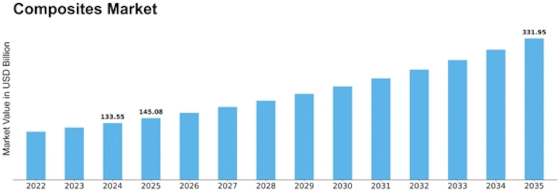

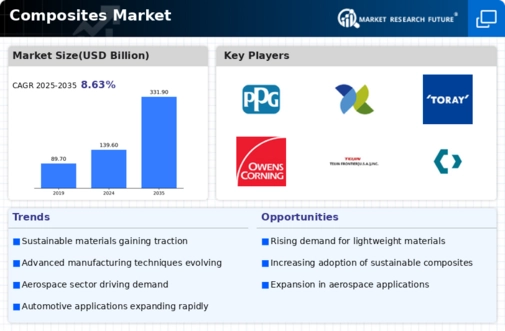
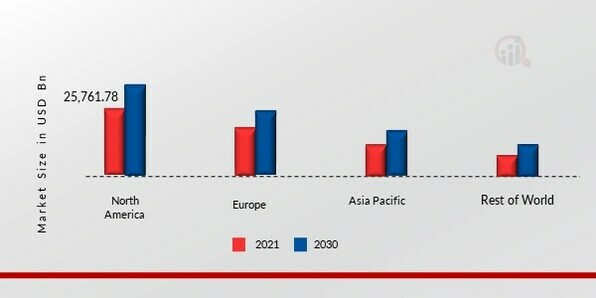 Source: Secondary Research, Primary Research, Market Research Future Database and Analyst Review
Source: Secondary Research, Primary Research, Market Research Future Database and Analyst Review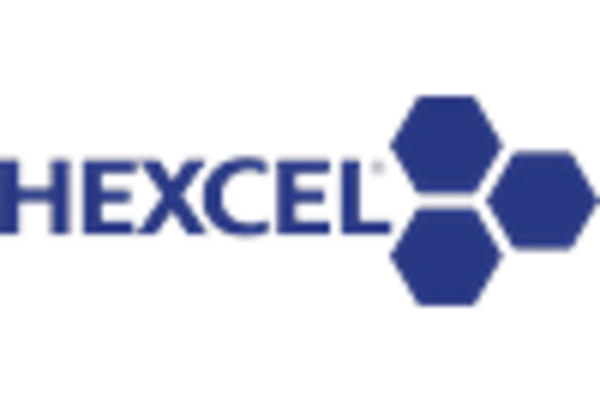

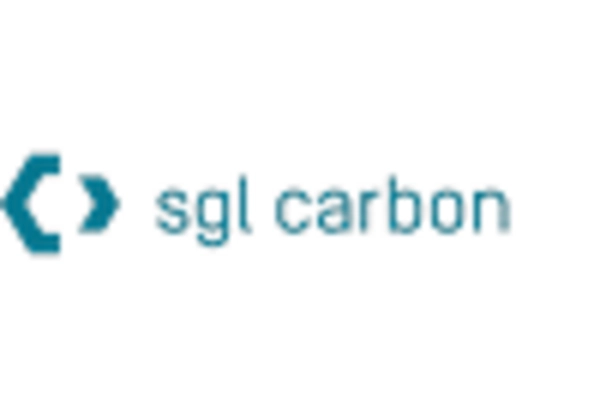

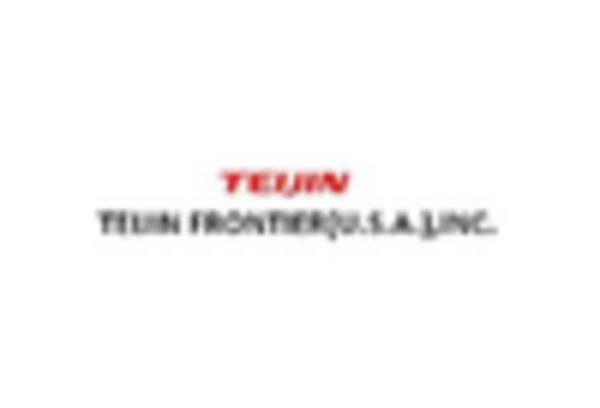
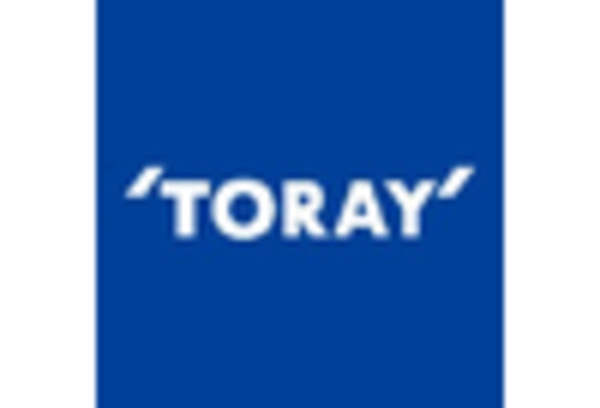

Leave a Comment